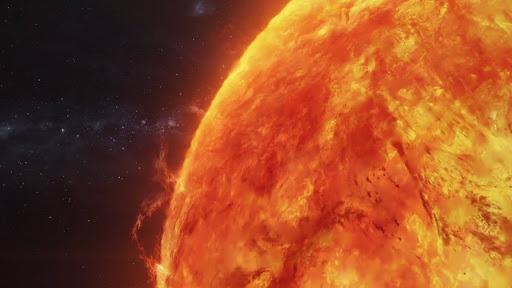
‘Peacock jets’ on Sun linked to magnetic flux cancellation
The Sun, the star at the center of our solar system, is a fascinating and complex entity that continues to captivate scientists and researchers. From its intense heat and light to its powerful magnetic fields, the Sun is a dynamic and ever-changing body that plays a crucial role in our daily lives. One of the most interesting and recently studied phenomena on the Sun is the “peacock jet”, a recurrent fan-shaped eruption in the Sun’s lower atmosphere. In a breakthrough discovery, scientists have found that these jets are powered by magnetic flux cancellation, where opposing magnetic fields vanish, triggering energy release. This deeper understanding of solar dynamics is vital for predicting space weather and safeguarding our technology.
What are peacock jets?
Peacock jets are a type of solar phenomenon that was first observed in the 1990s. They are characterized by the formation of a fan-shaped structure in the Sun’s lower atmosphere, which is known as the chromosphere. The chromosphere is the layer of the Sun’s atmosphere that is visible during a total solar eclipse, and it is here that the peacock jets originate.
The jets are typically several thousand kilometers wide and can be several times hotter than the surrounding plasma. They are also highly dynamic, with plasma flowing along the jet’s edges and creating a distinctive “fan” shape. The exact mechanism behind the formation of peacock jets is still not fully understood, but scientists have long suspected that they are related to the Sun’s magnetic field.
Magnetic flux cancellation
Magnetic flux cancellation is a process in which opposing magnetic fields meet and cancel each other out. This can occur in a variety of astrophysical contexts, including in the Sun’s magnetic field. When two magnetic fields with opposite polarities meet, they can cause a sudden release of energy, which can be observed as a burst of radiation or a sudden increase in temperature.
In the case of peacock jets, magnetic flux cancellation is thought to play a crucial role in their formation. Scientists believe that the jets are powered by the sudden release of energy that occurs when opposing magnetic fields meet and cancel each other out. This energy release then drives the formation of the fan-shaped structure that is characteristic of peacock jets.
New research reveals the mechanism
In a recent study, scientists used advanced computer simulations to study the mechanism behind peacock jets. By modeling the behavior of the Sun’s magnetic field and the plasma in the chromosphere, the researchers were able to recreate the conditions that give rise to these jets.
The study found that the formation of peacock jets is indeed linked to magnetic flux cancellation. When oppositely polarized magnetic fields meet, they cause a sudden release of energy that drives the formation of the fan-shaped structure. The researchers also found that the jets are highly dynamic, with plasma flowing along the jet’s edges and creating the distinctive “fan” shape.
Implications for space weather forecasting
The discovery of the mechanism behind peacock jets has significant implications for space weather forecasting. The Sun’s magnetic field plays a crucial role in the formation of space weather events such as solar flares and coronal mass ejections.
By understanding the mechanism behind peacock jets, scientists can better predict when and where these events are likely to occur. This can help to safeguard our technology and infrastructure from the effects of space weather.
Conclusion
The discovery of the mechanism behind peacock jets is an exciting breakthrough in our understanding of the Sun’s magnetic field. By revealing the role of magnetic flux cancellation in the formation of these jets, scientists have gained a deeper understanding of solar dynamics and can better predict space weather events.
As we continue to study the Sun and its many mysteries, we are reminded of the importance of continued research and exploration. The Sun is a complex and dynamic body that continues to captivate and inspire us, and it is through our study of it that we can gain a deeper understanding of the universe and our place within it.
News Source:






